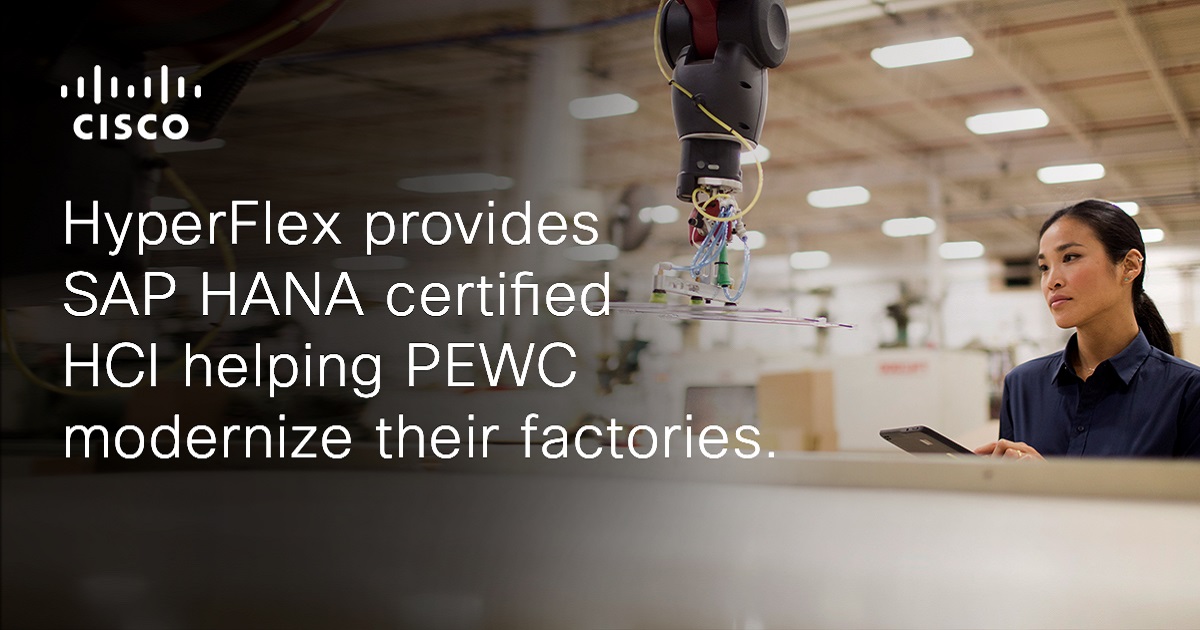
Hyper-Converged Infrastructure
Article | September 14, 2023
Containers have emerged as a choice for deploying and scaling applications, owing to their lightweight, isolated, and portable nature. However, the absence of robust security measures may expose containers to diverse threats, thereby compromising the confidentiality and integrity of data and apps.
Contents
1 Introduction
2 IaaS Container Security Techniques
2.1 Container Image Security
2.2 Host Security
2.3 Network Security
2.4 Data Security
2.5 Identity and Access Management (IAM)
2.6 Runtime Container Security
2.7 Compliance and Auditing
3 Conclusion
1. Introduction
Infrastructure as a Service has become an increasingly popular way of deploying and managing applications, and containerization has emerged as a leading technology for packaging and deploying these applications. Containers are software packages that include all the necessary components to operate in any environment. While containers offer numerous benefits, such as portability, scalability, and speed, they also introduce new security challenges that must be addressed.
Implementing adequate IaaS container security requires a comprehensive approach encompassing multiple layers and techniques. This blog explores the critical components of IaaS container security. It provides an overview of the techniques and best practices for implementing security measures that ensure the confidentiality and integrity of containerized applications. By following these, organizations can leverage the benefits of IaaS and containerization while mitigating the security risks that come along.
2. IaaS Container Security Techniques
The increasing IAAS security risks and security issues associated with IAAS these days are leading to a massive data breach. Thus, IAAS security concerns are taken into consideration, and seven best techniques are drafted below.
2.1. Container Image Security:
Container images are the building blocks of containerized applications. Ensuring the security of these images is essential to prevent security threats. The following measures are used for container image security:
Using secure registries: The registry is the location where container images are stored and distributed. Usage of centrally managed registries on campus, the International Organization for Standardization (ISO) can scan them for security issues and system managers may simply assess package gaps, etc.
Signing images: Container images can be signed using digital signatures to ensure their authenticity. Signed images can be verified before being deployed to ensure they have not been tampered with.
Scanning images: Although standard AppSec tools such as Software Composition Analysis (SCA) can check container images for vulnerabilities in software packages and dependencies, extra dependencies can be introduced during the development process or even at runtime.
2.2. Host Security:
Host security is a collection of capabilities that provide a framework for implementing a variety of security solutions on hosts to prevent attacks. The underlying host infrastructure where containers are deployed must be secured. The following measures are used for host security:
Using secure operating systems: The host operating system must be safe and up-to-date with the latest high severity security patches within 7 days of release, and others, within 30 days to prevent vulnerabilities and security issues.
Applying security patches: Security patches must be applied to the host operating system and other software packages to fix vulnerabilities and prevent security threats.
Hardening the host environment: The host environment must be hardened by disabling unnecessary services, limiting access to the host, and applying security policies to prevent unauthorized access.
2.3. Network Security:
Network security involves securing the network traffic between containers and the outside world. The following measures are used for network security:
Using Microsegmentation and firewalls: Microsegmentation tools with next-gen firewalls provide container network security. Microsegmentation software leverages network virtualization to build extremely granular security zones in data centers and cloud applications to isolate and safeguard each workload.
Encryption: Encryption can protect network traffic and prevent eavesdropping and interception of data.
Access control measures: Access control measures can restrict access to containerized applications based on user roles and responsibilities.
2.4. Data Security:
Data stored in containers must be secured to ensure its confidentiality and integrity. The following measures are used for data security:
Using encryption: Data stored in containers can be encrypted, using Transport Layer Security protocol version 1.1. (TLS 1.1) or higher, to protect it from unauthorized access and prevent data leaks. All outbound traffic from private cloud should be encrypted at the transport layer.
Access control measures: Access control measures can restrict access to sensitive data in containers based on user roles and responsibilities.
Not storing sensitive data in clear text: Sensitive data must not be stored in clear text within containers to prevent unauthorized access and data breaches. Backup app data, atleast weekly.
2.5. Identity and Access Management (IAM):
IAM involves managing access to the container infrastructure and resources based on the roles and responsibilities of the users. The following measures are used for IAM:
Implementing identity and access management solutions: IAM solutions can manage user identities, assign user roles and responsibilities, authenticate and provide access control policies.
Multi-factor authentication: Multi-factor authentication can add an extra layer of security to the login process.
Auditing capabilities: Auditing capabilities can monitor user activity and detect potential security threats.
2.6. Runtime Container Security:
To keep its containers safe, businesses should employ a defense-in-depth strategy, as part of runtime protection.
Malicious processes, files, and network activity that deviates from a baseline can be detected and blocked via runtime container security.
Container runtime protection can give an extra layer of defense against malicious code on top of the network security provided by containerized next-generation firewalls.
In addition, HTTP layer 7 based threats like the OWASP Top 10, denial of service (DoS), and bots can be prevented with embedded web application and API security.
2.7. Compliance and Auditing:
Compliance and auditing ensure that the container infrastructure complies with relevant regulatory and industry standards. The following measures are used for compliance and auditing:
Monitoring and auditing capabilities: Monitoring and auditing capabilities can detect and report cloud security incidents and violations.
Compliance frameworks: Compliance frameworks can be used to ensure that the container infrastructure complies with relevant regulatory and industry standards, such as HIPAA, PCI DSS, and GDPR.
Enabling data access logs on AWS S3 buckets containing high-risk Confidential Data is one such example.
3. Conclusion
IaaS container security is critical for organizations that rely on containerization technology for deploying and managing their applications. There is likely to be an increased focus on the increased use of AI and ML to detect and respond to security incidents in real-time, the adoption of more advanced encryption techniques to protect data, and the integration of security measures into the entire application development lifecycle.
In order to stay ahead of the challenges and ensure the continued security of containerized applications, the ongoing process of IaaS container security requires continuous attention and improvement. By prioritizing security and implementing effective measures, organizations can confidently leverage the benefits of containerization while maintaining the confidentiality and integrity of their applications and data.
Read More

Hyper-Converged Infrastructure
Article | October 3, 2023
Pacific Electric Wire & Cable Co. (PEWC) is a manufacturer in Taiwan with subsidiaries in China, Singapore, Thailand, and Australia. Like many companies, they had been facing the looming change over to SAP HANA. They were ready to switch over from their older SAP software and take advantage of SAP HANA apps and databases. They also had a goal of speeding up operational analytics and insights. But with the change to HANA, they needed all new infrastructure, certified by SAP, to support it.
Read More

Application Infrastructure, Application Storage
Article | July 19, 2023
Simplify server maintenance with managed services! Hybrid and multi-cloud systems work together in harmony, gaining advantage of both storage systems. Explore IaaS providers for your business needs.
Contents
1. Introduction
2. Multi-Cloud vs. Hybrid Cloud
2.1. Multi-Cloud Storage Systems
2.2. Hybrid Cloud Storage Systems
2.3. Choosing between Multi-Cloud and Hybrid Cloud
3. Managed and Unmanaged Services
4. 5 top companies providing IaaS platforms
4.1. ScaleMatrix
4.2. Faction
4.3. Expedient
4.4. PhoenixNAP
4.5. Rackspace Technology
5. Conclusion
1. Introduction
Several leading companies are providing IaaS platforms, offering managed and unmanaged services, and multi-cloud and hybrid cloud solutions to meet the growing demands of businesses in today's digital landscape. In addition, these companies offer various services to help organizations manage their IT infrastructure, including computing power, virtual machines, storage, and networking, while also providing additional value-added services such as security, disaster recovery, and automation.
2. Multi-Cloudvs. Hybrid Cloud
Multi-cloud and hybrid cloud are cloud deployment infrastructure models
2.1. Multi-Cloud Storage Systems:
Multicloud refers to an organization utilizing cloud computing services from at least two cloud providers to run their applications. Instead of relying on a single-cloud stack, multi-cloud environments usually consist of two or more public clouds, two or more private clouds, or a mix of both.
2.2. Hybrid Cloud Storage Systems:
A hybrid cloud refers to a heterogeneous computing environment where applications are executed using a blend of computing, storage, and services across distinct environments, such as public clouds, private clouds, on-premises data centers, or edge locations.
2.3. Choosing Between Multi-Cloud and Hybrid Cloud
2.3.1. Opting for a Hybrid Cloud:
For businesses that require control over certain data or workloads, a hybrid cloud strategy may be necessary. This involves hosting some applications in the public cloud while running critical workloads locally to balance the benefits of cloud technology with the need for local data control. - To avoid vendor lock-in, carefully select the best cloud services for each application or task. - Choose cost-effective services to engage in more effective business planning. - Ensure flexibility and adaptability for the cloud team. - Enable a company to use best-in-class services for each app/task
2.3.2. Selecting a Multi-Cloud:
Businesses often rely on multiple cloud providers for different services, such as public clouds for virtual machines and SaaS for business applications. They may also access AI, ML, or language cloud services from other providers. - To test and validate a cloud computing platform before migrating its resources and workloads. - To enable a centralized identity infrastructure across disparate systems. - To ensure a blend of self-service resources (private cloud) and a platform to run test workloads (public cloud), for DevOps based firms However, hybrids and multi-clouds can operate together. For example, a company can establish a private cloud for internal operations and then merge it with a public cloud to form a hybrid cloud. Additional clouds, whether IaaS, PaaS, or SaaS, can be added or integrated to provide specific resources or services to the business. Alternatively, a company can create a hybrid cloud with one public cloud provider and still use resources and services from other public clouds outside the hybrid cloud environment.
3. Managed and Unmanaged Services
IaaS comes in two main forms: managed and unmanaged. Managed services can simplify server maintenance by providing support and expertise. With managed dedicated servers, clients can focus on other aspects of their business while the host takes care of day-to-day maintenance, including software upgrades. This option is also safer, as self-managing a server without the necessary expertise can create security vulnerabilities. Unmanaged services are cheaper but don't include extras or support. Standard or custom control panels are used for task management. However, managing servers can only be done with experience. In addition, unmanaged hosting services are limited to providing a default solution configuration, and the applications must be installed on the cloud server by the user.
4. 5 Top Companies Providing IaaS Platforms
4.1. ScaleMatrix
ScaleMatrix offers IaaS solutions that empower businesses to manage their IT infrastructure while minimizing expensive capital expenditures (CAPEX) and reducing operational costs (OPEX). With ScaleMatrix's IaaS solutions, companies can have complete control over their infrastructure, utilizing the Ping, Power, Pipe, and server hardware. This allows businesses to tailor their infrastructure to fit their specific needs, with the option to make changes as required. Additionally, businesses can deploy hardware without significant capital investment, avoiding a CAPEX spike. Instead, they can pay for their infrastructure on an OPEX basis, allowing them to manage their expenses more efficiently.
4.2. Faction
Faction is a top-tier IaaS provider that offers a wide range of customizable solutions to meet the unique needs of its clients. Their IaaS offerings provide flexibility and agility to grow businesses while controlling costs. Clients can choose from various infrastructure options, including dedicated servers, private clouds, and hybrid cloud solutions. Faction's managed services portfolio differentiates it from other IaaS providers. The company's managed services are designed to provide clients with a more integrated ecosystem of managed services that can handle complex business needs across client on-premises and cloud environments. This includes services like monitoring and management, security and compliance, cloud backup, and disaster recovery, providing clients with a complete end-to-end solution for their IT infrastructure needs.
4.3. Expedient
Expedient provides infrastructure as a service solutions, including their flagship Expedient Enterprise Cloud, enabling clients to purchase resource pools and dedicated nodes. This cloud offering allows businesses to quickly scale resources without needing to refractor applications or learn a new platform. The platform offers a single management interface with self-service network provisioning, monitoring, and analytics. Expedient also provides a dedicated private cloud solution for applications like Citrix, reducing the infrastructure maintenance burden while maintaining scalability and flexibility. Expedient's Private Cloud Anywhere service allows businesses to have a cloud node within their own data center, providing a cloud-like experience within the proximity of mission-critical functions like manufacturing lines or retail stores.
4.4. PhoenixNAP
PhoenixNAP is a leading provider of bare metal cloud infrastructure solutions that empower businesses to innovate and achieve agility by deploying a flexible, cloud-native-ready infrastructure. Another significant advantage of PhoenixNAP's Bare Metal Cloud is the flexible billing models, which allow for fast scalability and cost optimization. The solutions offer the performance of dedicated hardware with cloud-like flexibility, allowing for automated provisioning of physical servers in minutes. Reserved instances are available for up to three years, providing cost-effective options. As a cloud-native-ready IaaS platform, PhoenixNAP's Bare Metal Cloud delivers high-performance, non-virtualized servers for even the most demanding workloads.
4.5. Rackspace Technology
Rackspace Technology is a leading provider of IT-as-a-Service (IaaS) solutions that enable businesses to leverage the latest technologies and gain a competitive advantage. Their IaaS solutions are designed to meet the unique needs of the FinTech industry, which demands highly secure, scalable, and reliable infrastructure to support mission-critical applications. Its IaaS offerings are designed to provide flexible and scalable infrastructure that can be customized to meet the specific needs of businesses. They offer a range of infrastructure services, including public and private clouds, dedicated servers, and managed hosting, as well as hybrid cloud solutions that combine the benefits of both public and private cloud environments.
5. Conclusion
The future of the top leading companies providing IaaS platforms looks promising as the demand for cloud computing services continues to grow. With the ever-increasing need for businesses to store, manage, and analyze large amounts of data, the demand for IaaS platforms is expected to increase in the coming years. This includes enhancing their security measures, network capabilities, and data center footprints. Furthermore, as the industry moves towards hybrid cloud and multi-cloud environments, these companies will need to adapt and provide solutions that can seamlessly integrate with various cloud platforms. This will require collaboration with other cloud service providers and investment in interoperability technologies. As businesses increasingly rely on data-driven decision-making, cloud providers will need to offer services that enable customers to process and analyze large amounts of data quickly and efficiently using AI and ML. The future of the top leading companies will require continuous innovation, collaboration, and investment in new technologies to meet the changing needs of their customers. As cloud computing continues to transform the business landscape, these companies will enable businesses to scale and grow in the digital age.
Read More

Application Infrastructure
Article | December 15, 2021
The success of 5G technology is a function of both the infrastructure that supports it and the ecosystems that enable it. Today, the definitive focus in the 5G space is on enterprise use cases, ranging from dedicated private 5G networks to accessing edge compute infrastructure and public or private clouds from the public 5G network. As a result, vendor-neutral multitenant data center providers and their rich interconnection capabilities are pivotal in helping make 5G a reality. This is true both in terms of the physical infrastructure needed to support 5G and the ability to effectively connect enterprises to 5G.
Industry experts expect 5G to enable emerging applications such as virtual and augmented reality (AR/VR), industrial robotics/controls as part of the industrial internet of things (IIoT), interactive gaming, autonomous driving, and remote medical procedures. These applications need a modern, cloud-based infrastructure to meet requirements around latency, cost, availability and scalability. This infrastructure must be able to provide real-time, high-bandwidth, low-latency access to latency-dependent applications distributed at the edge of the network.
How Equinix thinks about network slicing
Network slicing refers to the ability to provision and connect functions within a common physical network to provide the resources necessary to deliver service functionality under specific performance constraints (such as latency, throughput, capacity and reliability) and functional constraints (such as security and applications/services). With network slicing, enterprises can use 5G networks and services for a wide variety of use cases on the same infrastructure.
Providing continuity of network slices with optimal UPF placement and intelligent interconnection
Mobile traffic originates in the mobile network, but it is not contained to the mobile network domain, because it runs between the user app on a device and the server workload on multi-access edge compute (MEC) or on the cloud. Therefore, to preserve intended characteristics, the slice must be extended all the way to where the traffic wants to go. This is why we like to say “the slicing must go on.”
The placement of network functions within the slice must be optimized relative to the intended traffic flow, so that performance can be ensured end-to-end. As a result, organizations must place or activate the user plane function (UPF) in optimal locations relative to the end-to-end user plane traffic flow.
We expect that hybrid and multicloud connectivity will remain a key requirement for enterprises using 5G access. In this case, hybrid refers to private edge computing resources (what we loosely call “MEC”) located in data centers—such as Equinix International Business Exchange™ (IBX®) data centers—and multicloud refers to accessing multiple cloud providers from 5G devices. To ensure both hybrid and multicloud connectivity, enterprises need to make the UPF part of the multidomain virtual Layer 2/Layer 3 interconnection fabric.
Because a slice must span multiple domains, automation of UPF activation, provisioning and virtual interconnection to edge compute and multicloud environments is critical.
Implementing network slicing for interconnection of core and edge technology
Equinix partnered with Kaloom to develop network slicing for interconnection of core and edge (NICE) technology within our 5G and Edge Technology Development Center (5G ETDC) in Dallas. NICE technology is built using cloud-native network fabric and high-performance 5G UPF from Kaloom. This is a production-ready software solution, running on white boxes built with P4 programmable application-specific integrated circuits (ASICs), allowing for deep network slicing and support for high-performance 5G UPF with extremely fast data transfer rates.
With NICE technology in the 5G ETDC, Equinix demonstrates:
5G UPF deployment/activation and traffic breakout at Equinix for multiple slices.
Software-defined interconnection between the 5G core and MEC resources from multiple providers.
Software-defined interconnection between the 5G core and multiple cloud service providers.
Orchestration of provisioning and automation of interconnection across the 5G core, MEC and cloud resources.
Architecture of NICE technology in the Equinix 5G ETDC
The image above shows (from left to right):
The mobile domain with radio access network (RAN), devices (simulated) and mobile backhaul connected to Equinix.
The Equinix domain with:
Equinix Metal® supporting edge computing servers and a fabric controller from Kaloom.
Network slicing fabric providing interconnection and Layer 2/Layer 3 cloud-native networking to dynamically activate UPF instances/interfaces connected with MEC environments and clouds, forming two slices (shown above in blue and red).
Equinix Fabric™ and multicloud connectivity.
This demonstrates the benefit of having the UPF as a feature of the interconnection fabric, effectively allowing UPF activation as part of the virtual fabric configuration. This ultimately enables high-performance UPF that’s suitable for use cases such as high-speed 5G fixed wireless access.
Combining UPF instances and MEC environments into an interconnection fabric makes it possible to create continuity for the slices and influence performance and functionality. Equinix Fabric adds multicloud connectivity to slices, enabling organizations to directly integrate network slicing with their mobile hybrid multicloud architectures.
Successful private 5G edge deployments deliver value in several ways. Primarily, they offer immediate access to locally provisioned elastic compute, storage and networking resources that deliver the best user and application experiences. In addition, they help businesses access a rich ecosystem of partners to unlock new technologies at the edge.
Secure, reliable connectivity and scalable resources are essential at the edge. A multivendor strategy with best-of-breed components complemented by telemetry, advanced analytics with management and orchestration—as demonstrated with NICE in Equinix data centers—is a most effective way to meet those requirements. With Equinix’s global footprint of secure, well-equipped facilities, customers can maximize benefits.”
- Suresh Krishnan, CTO, Kaloom
Equinix and its partners are building the future of 5G
NICE technology is just one example of how the Equinix 5G and Edge Technology Development Center enables the innovation and development of real-world capabilities that underpin the edge computing and interconnection infrastructure required to successfully implement 5G use cases. A key benefit of the 5G ETDC is the ability to combine cutting-edge innovations from our partners like Kaloom with proven solutions from Equinix that already serve a large ecosystem of customers actively utilizing hybrid multicloud architectures.
Read More